
|

|
 |
|
MEDICINE FROM NATURE |
Malaria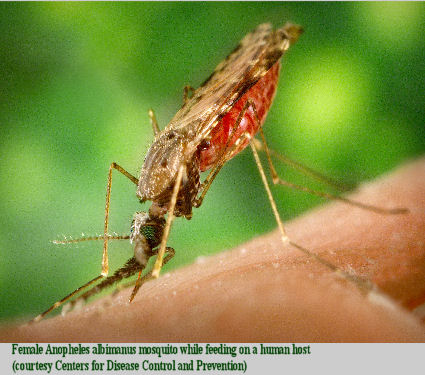 Malaria is one of the most deadly diseases in the world up to this day; The WHO (World Health
Organization) says
that in 2010 there were an estimated 219 million cases of malaria, resulting in
660,000 deaths – 1.2 million deaths. Many
of these were children in Africa.
Malaria is one of the most deadly diseases in the world up to this day; The WHO (World Health
Organization) says
that in 2010 there were an estimated 219 million cases of malaria, resulting in
660,000 deaths – 1.2 million deaths. Many
of these were children in Africa.Malaria is endemic in a broad band around the equator, in areas of the Americas, many parts of Asia, and most parts of Africa. Malaria is a mosquito-borne disease and caused by a parasite. The most deadly of these is known as Plasmodium falciparum. 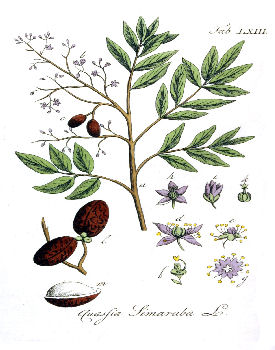 The symptoms are fever, chills, and flu-like illness; if left untreated; patients may develop severe
complications and even
die.
The symptoms are fever, chills, and flu-like illness; if left untreated; patients may develop severe
complications and even
die.Malaria can be prevented and it is treatable. The most effective medicines against this disease are the natural ones. The Amazon rainforerest has many plants that are effective in treating malaria. A few are: Mullaca, Pao Pereira, Quassia, Simarouba, and Spanish cedar. Dengue and Chikungunya 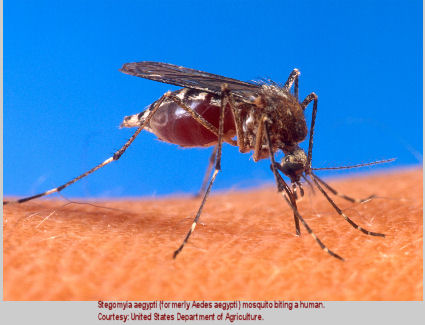 Dengue fever is a tropical disease caused by the dengue virus.
Dengue fever is a tropical disease caused by the dengue virus.This virus (Flavivirus) is spread through the bite of infected mosquitoes (Aedes aegypti and Aedes albopictus species). 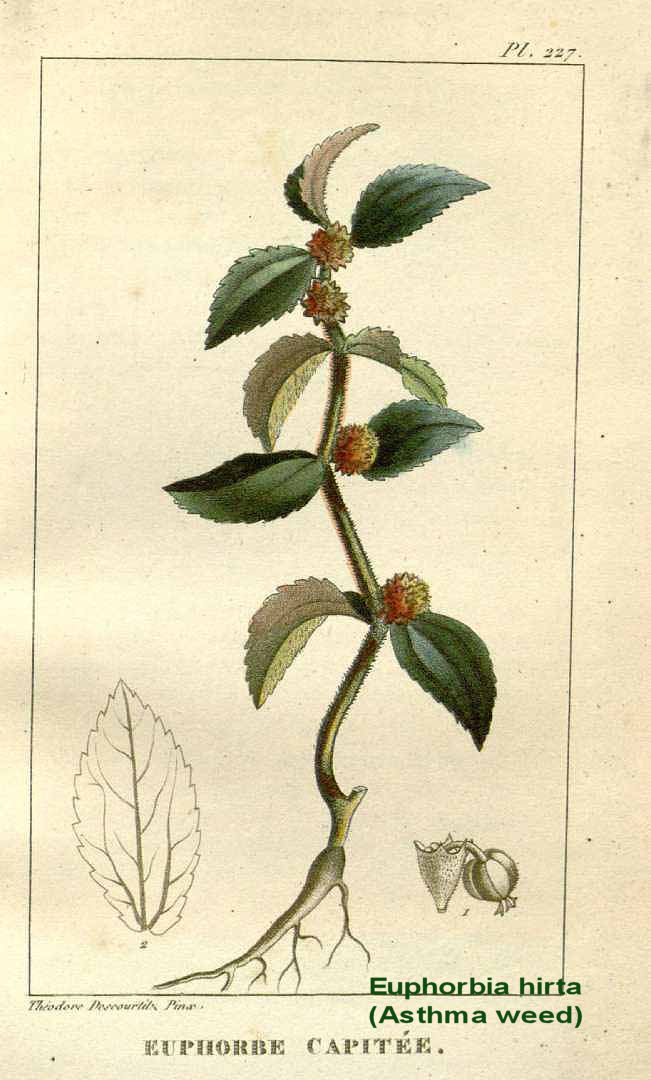 Dengue fever occurs mainly in tropical and subtropical regions; it is common in warm, wet areas.
Dengue fever occurs mainly in tropical and subtropical regions; it is common in warm, wet areas.The number of cases of dengue fever is between 50 and 528 million people infected yearly. 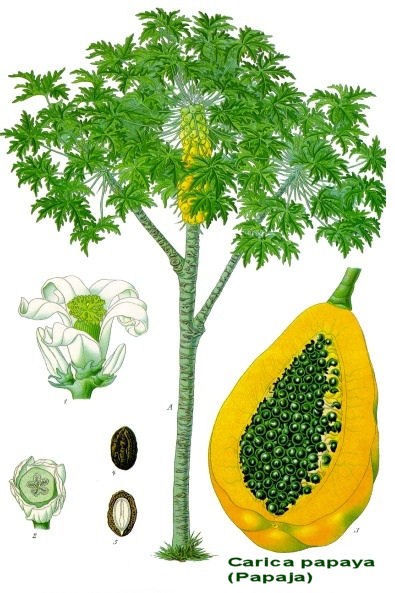 It can cause mild to severe flu-like symptoms and in severe cases this disease can be fatal.
It can cause mild to severe flu-like symptoms and in severe cases this disease can be fatal.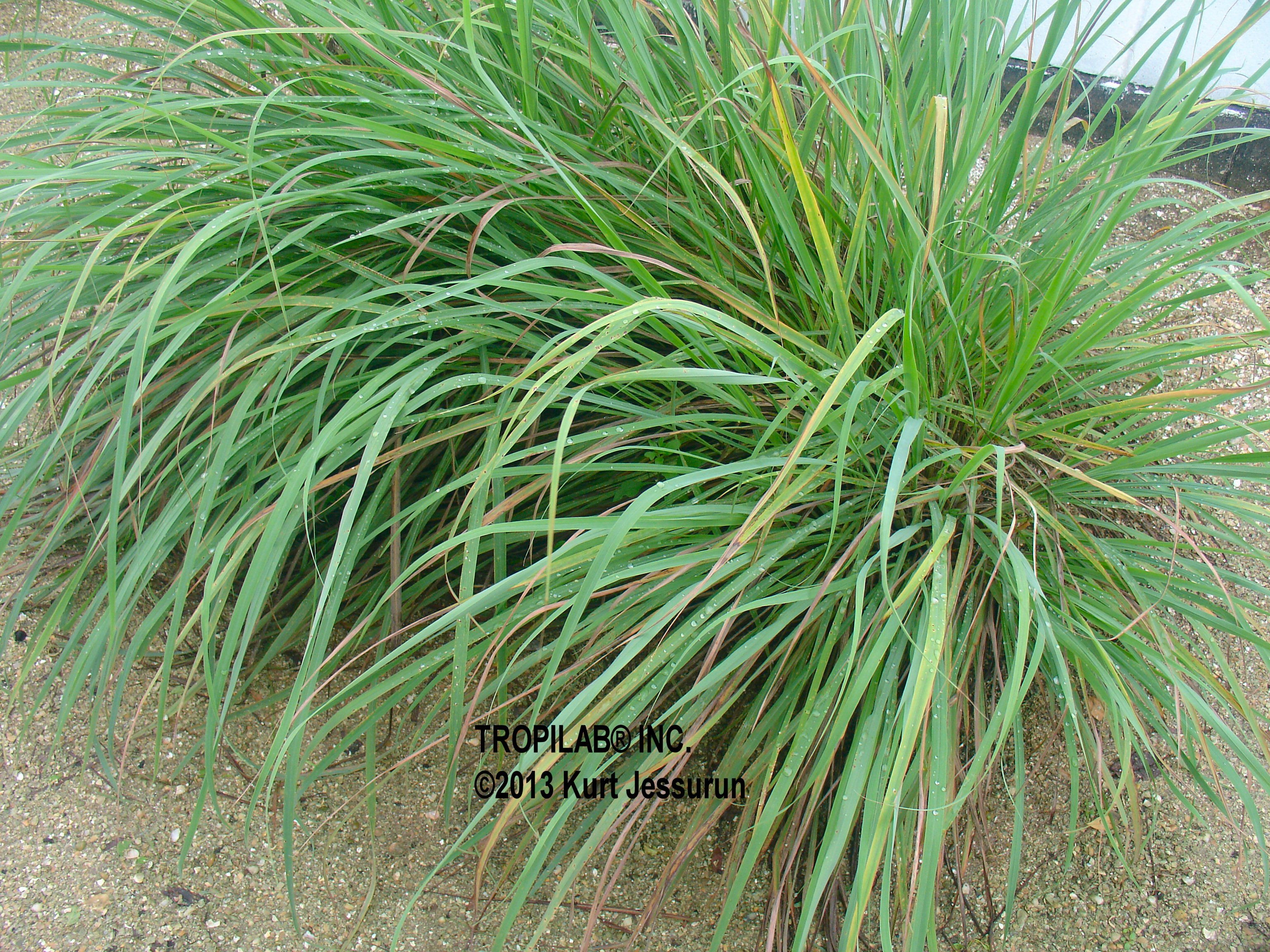 Chikungunya is an infection caused by the Chikungunya virus.
Chikungunya is an infection caused by the Chikungunya virus.This disease is transmitted in the same way as dengue fever to humans by the virus-carrying Aedes mosquitoes. Rodents are also a viral reservoir for this disease; it differs from that of dengue which has only humans and nonhuman primates (monkey’s and apes) as hosts. The common symptoms of this virus infection are: fever and severe joint pain. Other symptoms may include headache, muscle pain, joint swelling, or rash. Most people start to feel better after 7 to 10 days but some people will develop longer term joint pain. Natural ways to treat these diseases are with plants that increase the dwindling platelet count of the blood (Thrombocytopenia), without notable effects in red blood cell- and white blood cell counts. Some of these plants from the Amazon rainforest are: Asthma weed (Euphorbia hirta), Lemon grass (Cymbopogon citratus), and Papaya (Carica papaya). Besides the above mentioned tropical diseases, there are others that are still neglected and for many of them the mainstream western medicine has no real answer to. However, medicinal plants and herbs are available and they can be successfully applied. Besides the tropical diseases mentioned above; a few others are: Trachoma (an eye disease) and Onchocerciasis (river blindness). The TROPILAB® database also contains information about medicinal plants originally from South-east Asia, which are now for many years growing abundantly in Surinam. |
|
The story of Quassi |
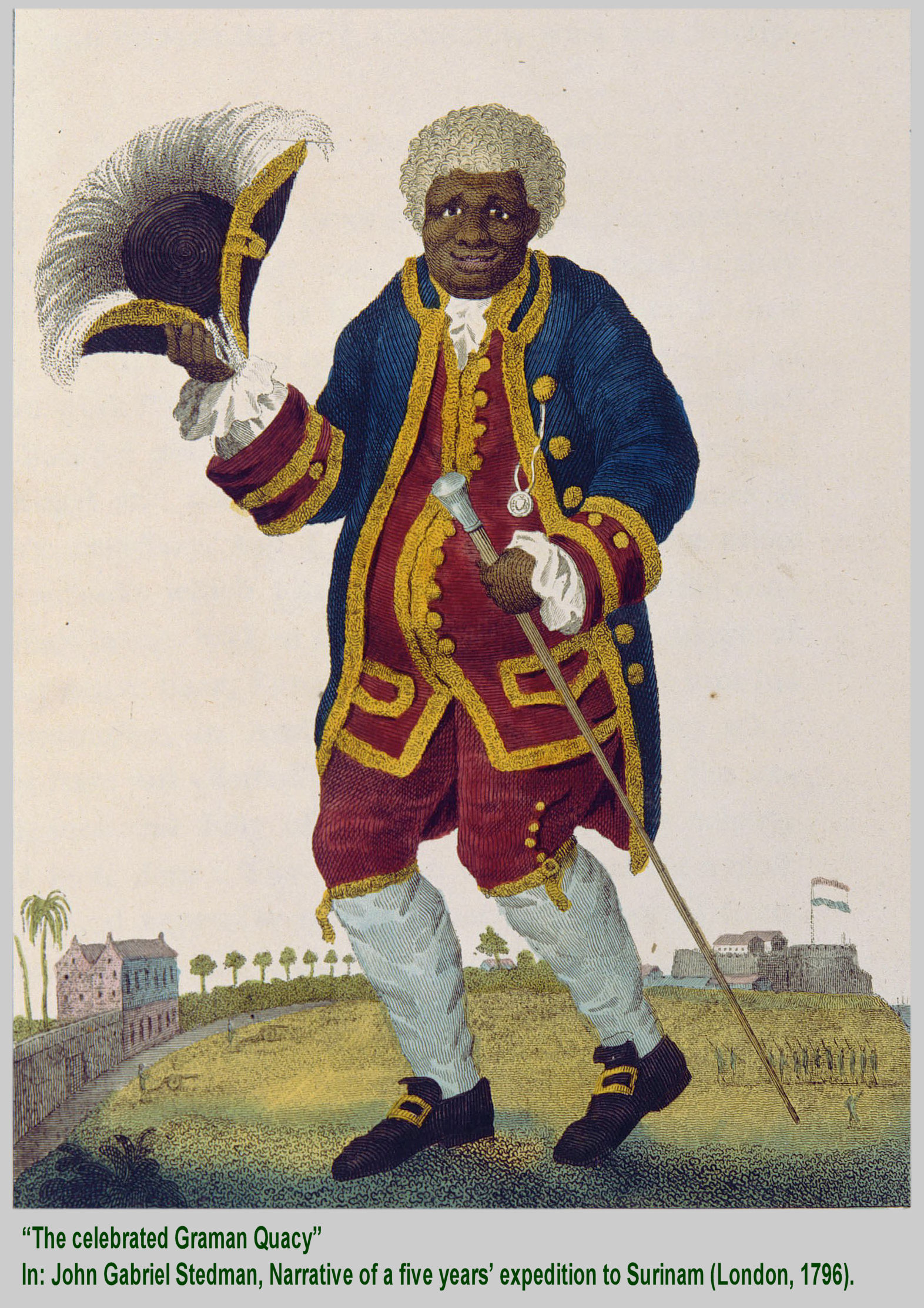 Kwasimukamba or Granman (Grand chief) Quassi, also called Quacy, Kwasi and Quasi,
(1692 - 1780)
was a celebrated Surinamese healer, and botanist. His roots were among the Akan people of
present day Ghana; as a child he
was enslaved and brought to Surinam in the New World. He learned
indigenous medicine from Indians in the Amazon rainforest
and had according to the slaves, the means and
magic powers to heal. He was very often directly consulted, not only by the
slaves, free blacks, and
Indians but also by the white elite and European colonists for their illnesses.
Kwasimukamba or Granman (Grand chief) Quassi, also called Quacy, Kwasi and Quasi,
(1692 - 1780)
was a celebrated Surinamese healer, and botanist. His roots were among the Akan people of
present day Ghana; as a child he
was enslaved and brought to Surinam in the New World. He learned
indigenous medicine from Indians in the Amazon rainforest
and had according to the slaves, the means and
magic powers to heal. He was very often directly consulted, not only by the
slaves, free blacks, and
Indians but also by the white elite and European colonists for their illnesses.His advice was even also sought from Europe, from where he received letters addressed to him as: "The most honorable and most learned gentleman Master Quassi, professor of herbology". He worked as a renowned healer and did this with such a success that he got his freedom. He became a rich man who owned a large plantation. 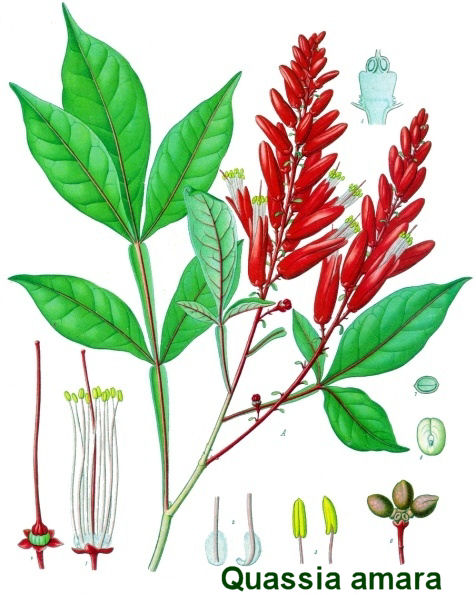 One of his most successful remedies was an extreme bitter tea that he used to treat infections by
intestinal parasites;
malaria and fevers. This was based on the extract of the plant Quassia amara
which
Carolus Linnaeus,
the famous Swedish botanist,
named after him, as the discoverer of its medicinal properties.
One of his most successful remedies was an extreme bitter tea that he used to treat infections by
intestinal parasites;
malaria and fevers. This was based on the extract of the plant Quassia amara
which
Carolus Linnaeus,
the famous Swedish botanist,
named after him, as the discoverer of its medicinal properties.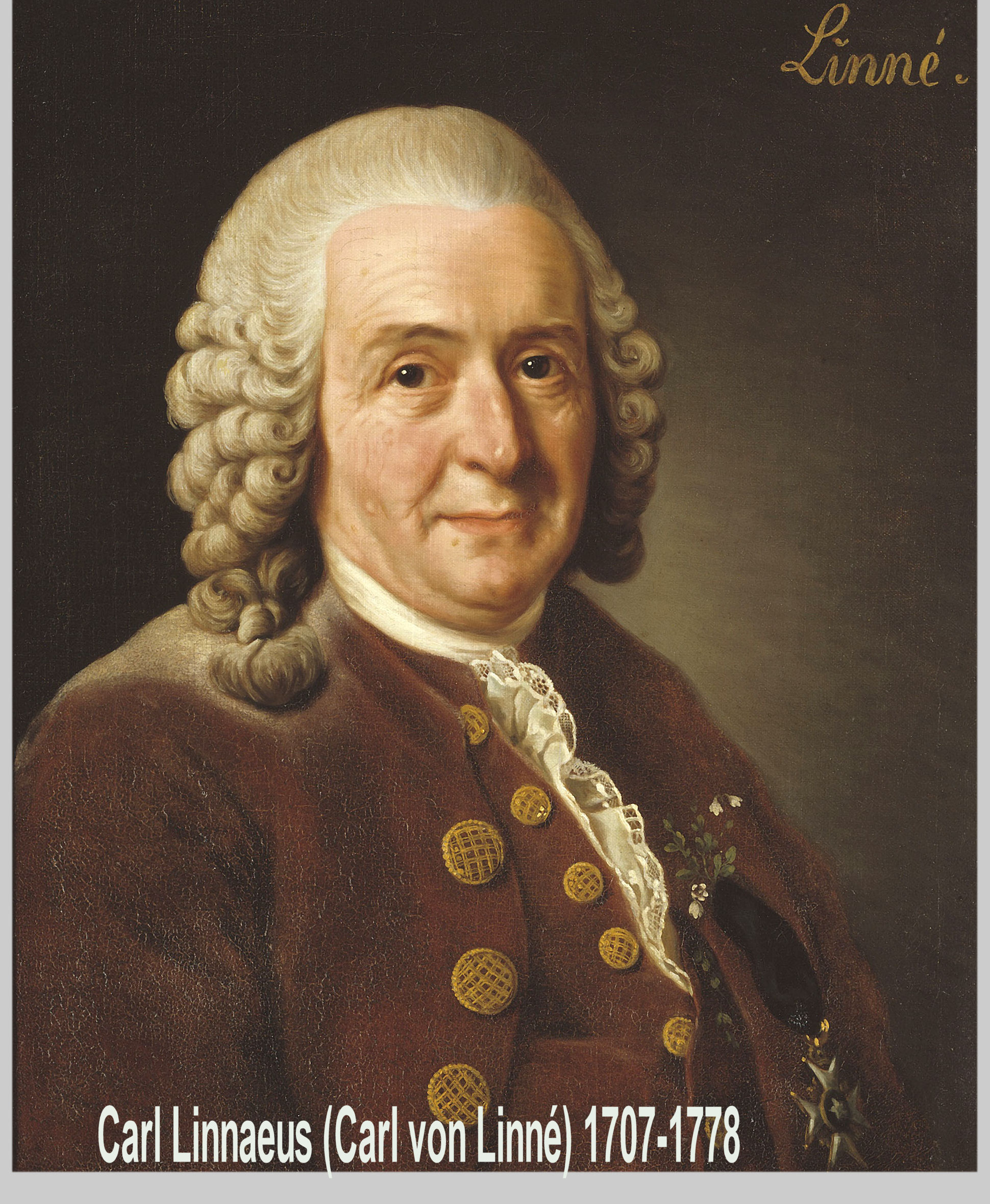 He was sometimes referred to as "Professor of Herbology in Surinam" and was presented to Prince
Willem V of Orange,
Stadtholder (chief executive) of the Dutch Republic, in The Hague in 1776.
He was sometimes referred to as "Professor of Herbology in Surinam" and was presented to Prince
Willem V of Orange,
Stadtholder (chief executive) of the Dutch Republic, in The Hague in 1776.From the mid-18th century Quassia amara began to appear in western pharmacopeia. Quassia is still used today; as a natural insecticide, in herbal medicine (digestive aid, liver & gallbladder problems) and as an additive in the food industry. |
Disclaimer: |